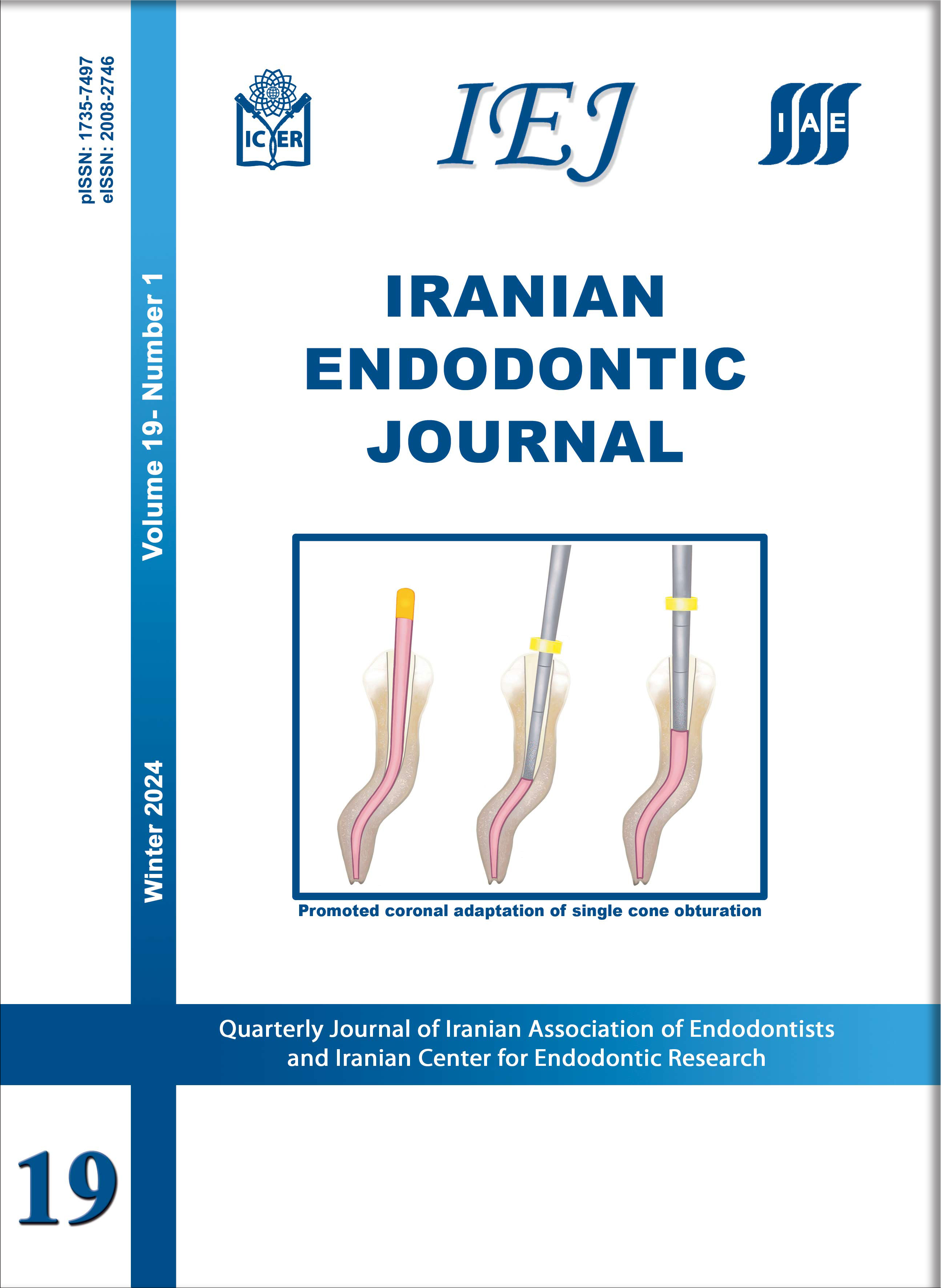In Vitro Spectrophotometry of Tooth Discoloration Induced by Tooth-Colored Mineral Trioxide Aggregate and Calcium-Enriched Mixture Cement
Iranian Endodontic Journal,
Vol. 10 No. 4 (2015),
9 September 2015,
Page 226-230
https://doi.org/10.22037/iej.v10i4.7506
Introduction: There are numerous factors that can lead to tooth discoloration after endodontic treatment, such as penetration of endodontic materials into the dentinal tubules during root canal treatment. The aim of this in vitro study was to compare discoloration induced by tooth colored mineral trioxide aggregate (MTA) and calcium-enriched mixture (CEM) cement in extracted human teeth. Methods and Materials: Thirty two dentin-enamel cuboid blocks (7×7×2 mm) were prepared from extracted maxillary central incisors. Standardized cavities were prepared in the middle of each cube, leaving 1 mm of enamel and dentin on the labial surface. The specimens were randomly divided into two study groups (n=12) and two positive and negative control groups (n=4). In either study groups the cavities were filled with MTA or CEM cement. The positive and negative control groups were filled with blood or left empty, respectively. The cavities were sealed with composite resin and stored in normal saline. Color measurement was carried out by spectrophotometry at different time intervals including before (T0), and 1 week (T1), 1 month (T2) and 6 months (T3) after placement of materials. Repeated-measures ANOVA was used to compare the discoloration between the groups; the material type was considered as the inter-subject factor. The level of significance was set at 0.05. Results: No significant differences were detected between the groups in all time intervals (P>0.05). Conclusion: Tooth discoloration was similarly detectable with both of the two experimental materials.
Keywords: Calcium-Enriched Mixture; CEM Cement; Crown Discoloration; Mineral Trioxide Aggregate; MTA; Spectrophotometer




